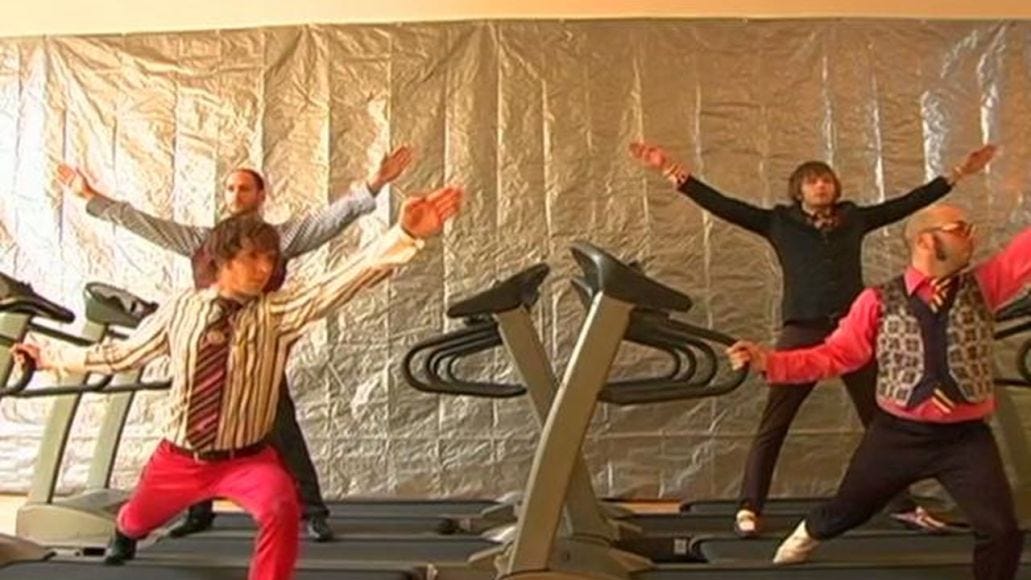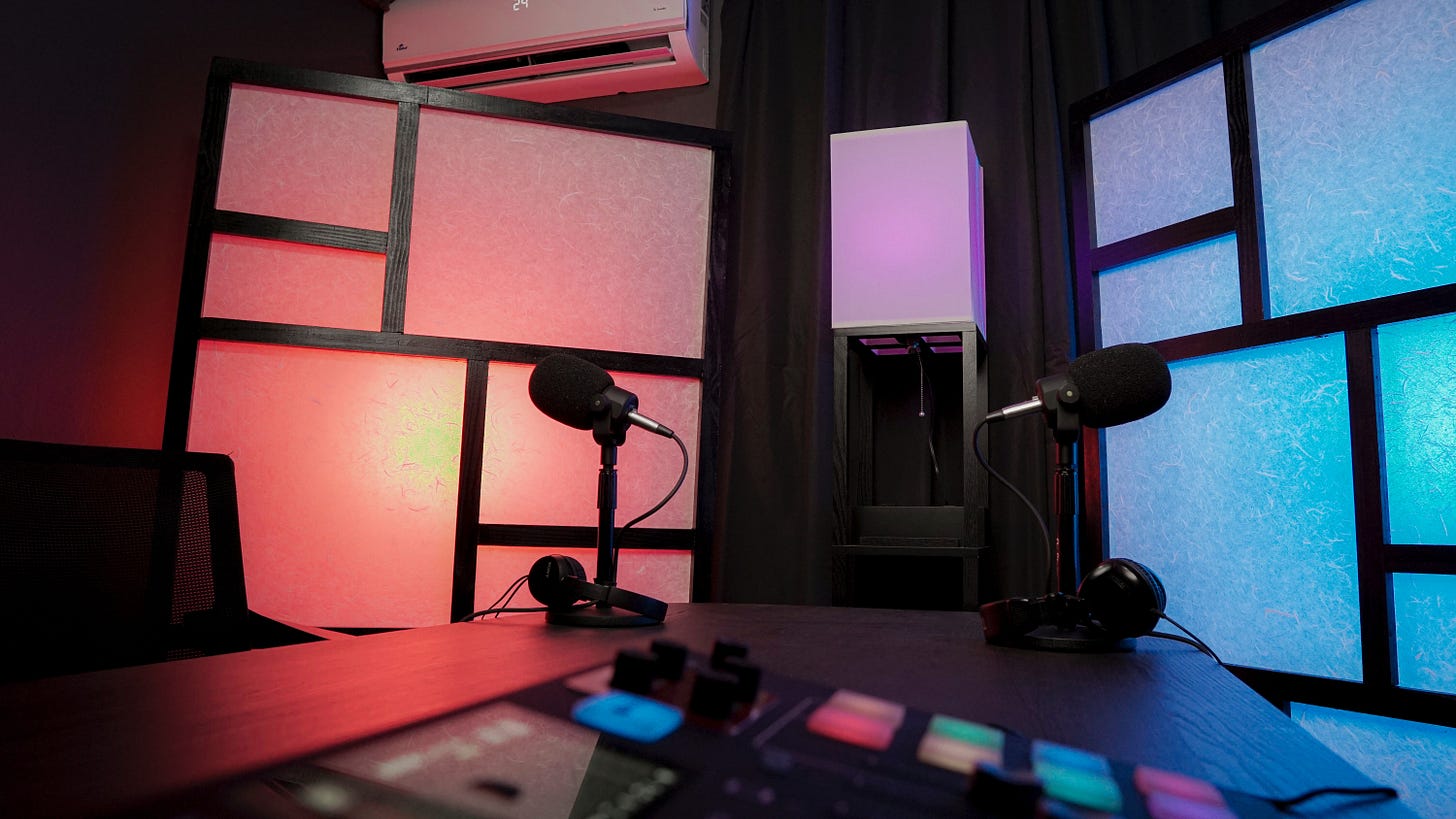Audio is a second-class medium
People spend hours listening to radio and to podcasts, but audio-led ideas rarely get top billing.
My favourite campaign I've seen this week, which I discovered thanks to
was this from Yorkshire Tea:I thought it was effective because:
It made me laugh multiple times
Noticeable but not clunky reference to the full range of Yorkshire Tea (including the decaf, of which I am a big fan)
Taps into a classic British behaviour of taking foodstuffs abroad with us - perhaps a typical behaviour to highlight, but seeing it paired with...
....an execution that looks like The Inbetweeners movie gave the video an unexpected twist
From a craft POV, also fascinating to see the execution delivered as a music video. Not making an ad look like a music video, but an actual music video - I expected to see that the central star had a record deal and an album coming out.
The song is available on Spotify, but I'm not convinced the gag works without the associated visuals - there's currently no play count for the track. Skipton Alfie (the artist) has only 332 monthly listeners.
There's no shame in that - plenty of songs only work with their visuals. Has anyone ever listened to an OK Go song without watching one of their high-production videos? I don't think they have.
In a world where TikTok and YouTube are two of the most popular ways people listen to and discover music, it's fair to say that people prefer visuals with much of their music.
And the audio-only elements of campaigns have generally always played second-class citizen to their video counterparts. We're always talking about hero videos; you rarely hear anyone in an inter-agency setting talking about hero audio.
Radio advertising lacks "the glamour attached to a big TV ad" (to quote
). There might be a Cannes Lions category for the best use of audio, but if there is, it doesn't generate the column inches that a visually led campaign like The Last Photo secures. One of Rory Sutherland's key takeaways from his appearances at MAD//Fest and Nudgestock was that "we are hugely under-exploiting the power of sonic branding". I don't know if we are, but it's a handed proof point for my argument.And in my world of comms and PR, doing a radio day is seen as a hygiene factor - especially if your line-up of stations "only" manages to secure regional stations, which Liz Truss regarded as safer second-class options during her ill-fated premiership (what a weird fever dream that period was).
There are plenty of stats to support why visuals are most impactful than other mediums - we process visuals 60,000 times faster than text. People typically remember 20% of what they read but 80% of what they see.
But there are also plenty of stats to highlight the impact of audio. The reach of radio as a channel is phenomenal: 88% of the population listens to the radio at least once a week, and more people listen to commercial radio than the BBC.
Additionally, 68% of podcast episodes are listened to in their entirety - and it's a pain in the backside to skip podcast ads.
And for a while, podcasts have managed to steer clear of "second-class" audio status. They were a “new” format (even though the term has been around for nearly 20 years). The explosion of popularity in podcasts, driven by the likes of Serial and Joe Rogan, is a broadly “tech and social media” trend. This collective excitement meant that pitching a podcast idea to a client wasn't a drumbeat, hygiene factor but a genuine big idea - even if making your own podcast is extremely expensive, time-consuming, and much more complicated than it sounds (I know, I've tried).
But the stardust of podcasts seems to be on the wane. Partly that's down to the difficulty of demonstrating the business impact of podcast activity.
The joy of podcasts is that they help people disconnect from the broader maelstrom of "content"; people generally listen to podcasts by themselves while commuting or doing chores. But that's a challenge for advertisers using last-click attribution for measuring impact - you don't generally click on a podcast. Podcast listening metrics are also pretty basic. You can offer codes and run isolated campaigns as a control, but podcast measurement is still challenging. That’s probably why, as per Benedict Evans' column this week, podcast ad revenue is only "10% of radio [ad revenue]".
As Benedict also points out in his column, more and more podcasts are also vodcasts (urgh), filmed and uploaded to YouTube. The appeal of podcasts is that they're cheaper to produce than video, as they require less production with (generally) less scripting and storyboarding.
But the best podcast producers tightly edit their episodes, getting the balance between "languid, informal conversation" and "rambling banter that's only interesting to those contributing" just right. And that requires a level of production. And anyway, it seems that people like watching videos of other people talking - even if it is a simple one or two-camera set-up that lacks the dynamism of a highly-produced YouTube series.
Benedict finishes his column by posing a question - is the podcast market destined to remain niche? Or are we still, 20 years in, on the early stages of the podcast adoption curve? To these two, I'll add my question - do podcasts need to be more visual to get cut through, and do we need a better term than vodcast to describe them to get this concept away?
For those working in comms and thinking about utilising podcasts in their campaigns, it comes down to your audience. If the answer to Benedict's question is that podcasts are niche and look set to remain that way, then it's a niche that plenty of corporate affairs clients want to reach.
Podcasts are overwhelmingly consumed by professionals educated to a degree level. Senior business leaders are statistically likely to listen to at least one podcast a week. According to
, podcasts are loved by politicians in Westminster (and most likely male politicians, given that 63% of podcast listeners identify as male).Business leaders and politicians are tough audiences to reach, and being able to reach them with native podcast advertising or placing a spokesperson on a show often means being on a channel where they're paying much higher levels of attention than LinkedIn or Twitter. And based on the revenues Benedict Evans reports, it sounds like you'll be competing with only a few other businesses - even if there's a trade-off on how you measure effectiveness.
But the fact remains that for many agencies and clients, effectiveness feels more effective when you can see what's happening. When you can see the outputs of your work, whether as a video, a piece of coverage or a media partnership, they feel more tangible and more substantive. It's a challenge the podcasting industry will need to overcome to get more brands and advertisers on board - or be happy with second-class status while the Skipton Alfies of the world clean up during awards season.




